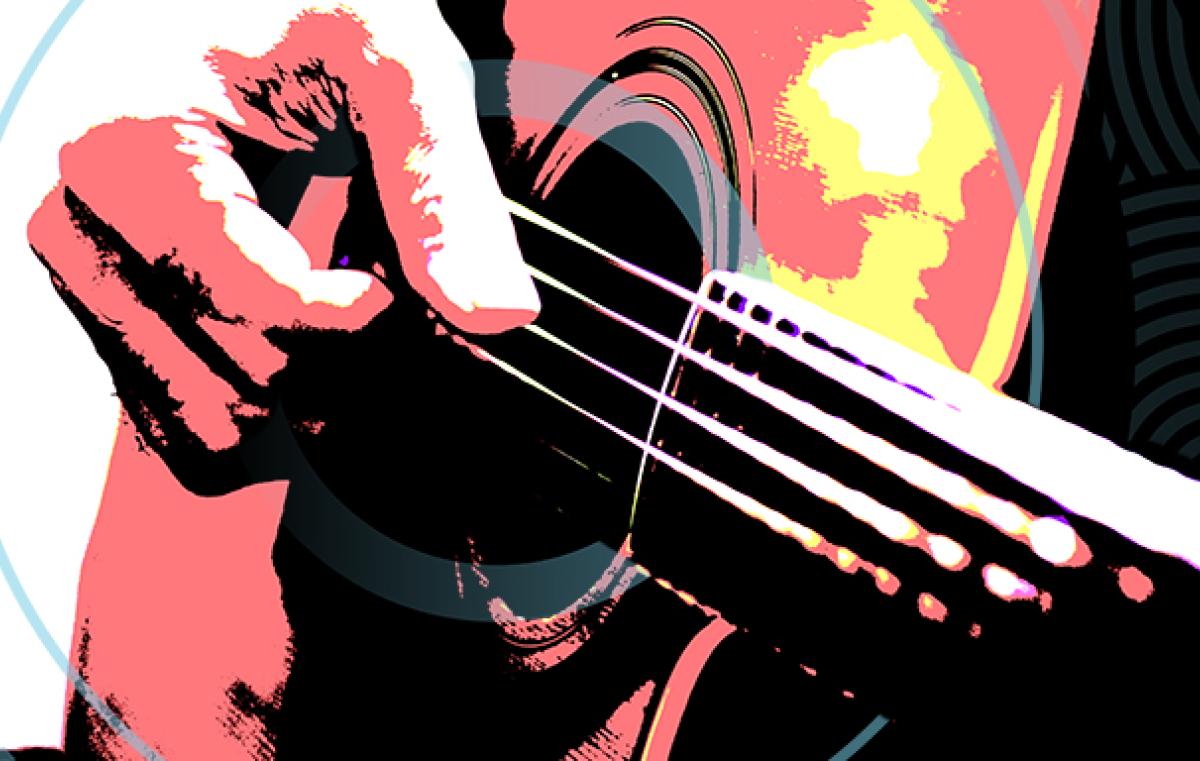Jimi Hendrix and the Electric Guitar
Where did the widespread admiration for guitar players come from, and why does the electric guitar receive such special treatment in popular music? Bar-Ilan University researcher Dr. Nadav Appel explains

On September 6, 1970, guitar legend Jimi Hendrix took the stage at the Open Air Love & Peace Festival in Germany for what was to be his last concert performance.
Jimi Hendrix was a gifted composer, lyricist, and singer, but he was best known for his electric guitar playing. His virtuoso playing, combined with a colorful and flamboyant performance style, made Hendrix the ultimate "guitar hero" of the rock and roll culture. But where did this widespread admiration for guitar players come from, and why does the electric guitar receive such special treatment in popular music?
Dr. Nadav Appel, of the Program for Hermeneutics & Cultural Studies at Bar-Ilan University, explains the cultural phenomenon of the electric guitar.
The electric guitar was first introduced in the early 1930s as a powerful substitute for the acoustic guitar, whose sounds were swallowed up in the big bands of the swing era. In the 1940s, the electric guitar was adopted by blues players who appreciated the guitar's expressive potential, vocal nuances, and ability to produce rough and "dirty" sounds. From blues the electric guitar arrived to the rock and roll scene in the 1950s, and during the rock revolution of the 1960s the guitar took on its iconic status in popular culture.
Rock music brought together folk traditions like blues and country with more "artistic" conceptions of musical creation, mainly based on the ideology of romantic art. This move occurred in tandem with the new youth culture that flourished in the West in the 1960s and spread an ethos of individual, sexual, and spiritual liberation.
The romantic approach sees music as an expression of artist's soul. The violin, whose strings emit an emotional and wailing sound, thus became the instrument most associated with the romantic music of the 19th century. But with the transition from classical music to the world of rock, the electric guitar, whose amplified sound emphasizes the vibration and stretching of the strings, played a parallel role as a preferred means of emotional expression.
The ability to manipulate the sounds of the electric guitar, aided by a slew of electronic effects, was also of interest to the psychedelic culture that was looking for "out of this world" sounds to echo or enrich mental experiences created under the influence of psychoactive drugs.
At the same time, the rock scene of the 1960s established the custom of holding the guitar at hip level, a position that's not ideal for playing comfort but emphasizes the character of the guitar as a phallic symbol, thereby infusing guitar playing with sexual connotations.
In the half century since the electric guitar was at the center of a musical revolution, fashions and worldviews have changed. The "guitar hero" is a less central figure in today's popular culture, and some see guitarists as representing impressive but empty virtuosity, or as symbols of machoism.
However, the electric guitar continues to play a fundamental role in the musical arsenal of many musicians (from the eclectic rock of St. Vincent to the experimental ambient of Rachika Nayar). It is possible that letting go of the stylistic and performance conventions of the classic "guitar hero" render the possibility of continued development of the creative potential ingrained in this instrument.